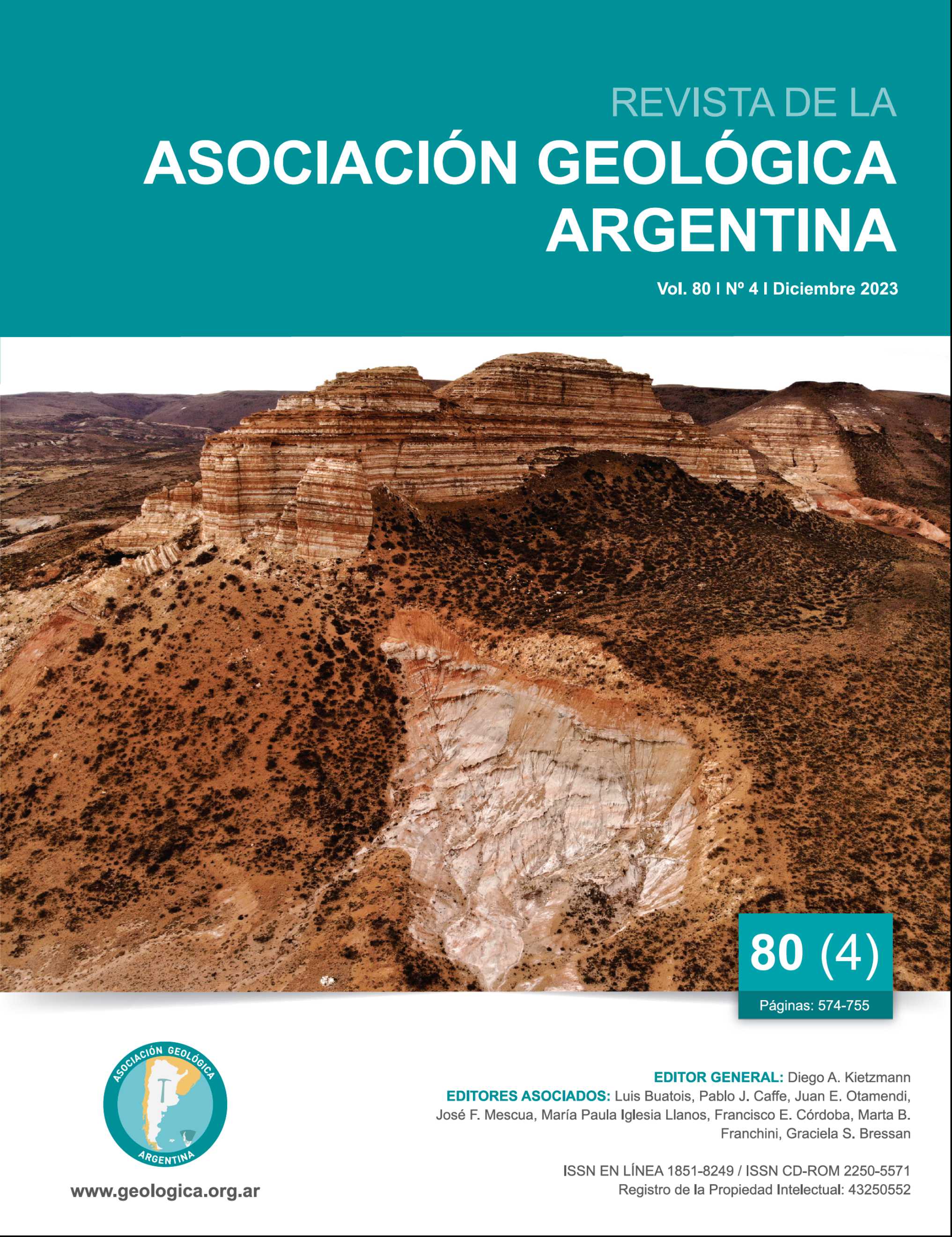Climate and environmental changes recorded in Quaternary sediments of the Rolling Pampas, Buenos Aires province, Argentina
Main Article Content
Abstract
Loessic sediments of the Rolling Pampa, assigned to the Pampeano and La Postrera Formations, are presented. Paleoclimatic and paleoenvironmental interpretations are made, the magnetostratigraphy of the profile analyzed is defined, and a tentative stratigraphic correlation with oxygen isotope stages is proposed.
It is a pedo-sedimentary succession composed of silty, silty-sandy and muddy sediments of aeolian and fluvial-eolian origin modified by pedogenesis to different degrees; paleosols are classified as gleysols, argilisols, and protosols. The modal mineralogical components come mainly from the Andean sector. The most notable variation is recorded in the proportion of vitroclasts, whose increase (≥ 75%) evidences the occurrence of 2 events of greater pyroclastic activity, one prior to the Matuyama/Brunhes change in magnetic polarity and another contemporary with the deposition of the La Formation.
According to the determined magnetostratigraphy, the sediments of the profile have an age of less than 1.78 Ma (Early Pleistocene (Calabriense) – Holocene). The silicophytolith association shows that in this time interval, the landscape of the Rolling Pampas was similar to the current one, with open to semi-open environments, covered by mesothermal grasslands that favored the development of soil profiles. In this context, climatic changes, variations in the sedimentation rate/pedogenesis relationship, topography and position of the water table, interpreted through the behavior of magnetic parameters and mineralogical and micromorphological analyses, were decisive in its degree of evolution, giving rise to soil profiles with distinctive characteristics.
Article Details

This work is licensed under a Creative Commons Attribution-NonCommercial 4.0 International License.
Nota de copyright
Los autores conservan los derechos de autor y garantizan a la revista el derecho de ser la primera publicación del trabajo licenciado según una licencia de atribución Creative Commons que permite a otros compartir el trabajo con el reconocimiento de la autoría y de la publicación en la que se publicó por primera vez.
Declaración de privacidad
Los nombres y direcciones de correo electrónico introducidos en esta revista se usarán exclusivamente para los fines declarados por esta revista y no estarán disponibles para ningún otro propósito u otra persona.

